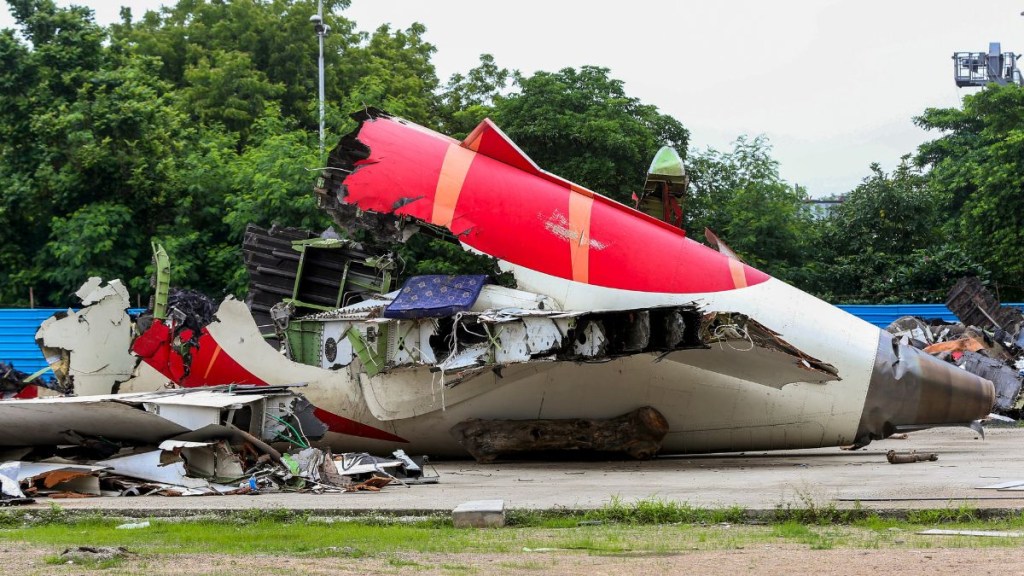The Aircraft Accident Investigation Bureau (AAIB) released the preliminary report on the ill-fated Air India flight a month after the June 12 crash. While it did not pinpoint the cause of one of the world’s worst aviation accidents, data from the Enhanced Airborne Flight Recorder (EAFR) revealed that the fuel cutoff switches for both engines were moved from RUN to CUTOFF seconds after take-off. Several aviation experts speculated on a technical system failure, while others emphasised the need for a deeper investigation.
Union Civil Aviation Minister Ram Mohan Naidu responded to the AAIB report on last month’s Air India crash, stating that it is based on preliminary findings and urged the public not to reach any conclusions until the final report is released.
‘Points don’t add up…’: Mark D Martin
Founder & CEO of Martin Consulting, Aviation Safety and Consulting Firm, Mark D Martin, points out the preliminary stage of the investigation. He told ANI that the Air India crash report is “cryptic in many ways” and that it mentions a “lot of points that don’t add up”. “If there was an engine failure, that is only when the RAT deploys,” he told the news agency. Further, he explained that there is a singular way to attempt to reignite the engine. “It has been reported in the past that the fuel cutoff switches have been tripped and gone back to the cutoff position several times,” he added, probing into the need for further investigation.
#WATCH | Delhi: As Aircraft Accident Investigation Bureau (AAIB) releases its preliminary report on the Air India plane crash, Founder & CEO of Martin Consulting, Aviation Safety and Consulting Firm, Mark D Martin says, "It is the initial report, and it is quite cryptic in many… pic.twitter.com/22mkDh9NFY
— ANI (@ANI) July 12, 2025
‘More questions than answers’: Sanjay Lazar
Aviation expert Sanjay Lazar responded to the AAIB preliminary report, saying that it raises “more questions than it answers”. According to him, there are “a lot of gaps” as he questioned the Wall Street Journal’s probe with similar information prior to the report’s release. He urged that the “AAIB should have made the entire Cockpit Voice Recorder (CVR) transcript public. By just informing the public about one line, it leaves a lot of questions hanging.”
He also pointed out his dissatisfaction with the lack of safety recommendations for Boeing or General Electric. “That means that you have washed your hands, or you have decided that there is something else…” he further told the outlet.
#WATCH | Pune, Maharashtra: As Aircraft Accident Investigation Bureau (AAIB) releases its preliminary report on the Air India plane crash, aviation expert Sanjay Lazar says, "The AAIB report raises more questions than it answers. There are a lot of gaps, which might fill once the… pic.twitter.com/poVKtmWT8b
— ANI (@ANI) July 12, 2025
‘Twin engine failure’: Rajiv Pratap Rudy
Commercial Pilot & BJP Leader Rajiv Pratap Rudy stated the fact that the aircraft reached the required speed for take-off smoothly, called the rotation speed. However, complications began soon after lift-off. As per his technical knowledge, he explained two possibilities: “One is the deployment of RAT, which has happened, and the second is that the APU, auxiliary power unit, has started operations. This automatically happens in an aircraft when there is a twin-engine failure.”
Reiterating the findings of the report, he shared that only when the aircraft loses thrust and altitude, the pilot monitoring the situation immediately puts the fuel switch control off and on. “After the crash, both switches were found on…,” he said.
Fuel supply cut off on AI 171
Experts point out that the fuel cut-off only takes place once the engine fails. Captain Umang N Jani, HoD Aviation Department, Indus University, affirms the possibility of the same. He, referring to the cockpit, said, “When you start the engine, there is a complete sequence. It is important to follow that sequence, and this system automatically follows this entire sequence.”
The AAIB report gave a timeline that led up to the crash in Ahmedabad, which clearly stated that in 45 seconds, the plane left all but one survivor.
Former DGCA employee
Former Flight Operations Inspector with DGCA, Captain Prashant Dhalla, said that this is only a preliminary report. The AAIB’s investigation into the minute details and black box recordings shows that “restarting the fuel cutoff” is a process where the pilot tries to “regain power in the engine”. “The time was also very critical,” the aviation regulator added. Revealing more insight into the line of communication, he reiterated from the AAIB report that AI171 made contact with the ATC moments before registering the Mayday call.
Putting rumours to rest?
While the AAIB report had put certain doubts to rest, several new questions were raised by experts. “The CVR recording clearly established that the pilots did not turn off fuel switches. A technical malfunction seems more likely,” said Retired Captain and Aviation Expert Alok Singh.
Introducing a new angle on the advisory on the malfunction of the switches, Singh emphasised the need for a fair probe into the matter.

